What cavity nesting birds use man-made bird houses? What months do birds nest and what materials do they use to build them? What can we learn about bird nests and their nesting behavior from our bird houses?
The Land Trust’s Bird Houses
The Land Trust, with the help of volunteers, is studying the use of our bird boxes. Studying bird boxes, by definition, teaches us about bird nests. We currently maintain 48 of them on 12 properties. The majority are small post-mounted boxes suitable for bluebirds, tree swallows, chickadees and house wrens. The others vary in size and design to attract kestrels,screech and bard owls and wood ducks.
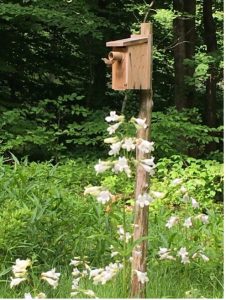
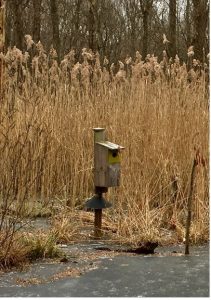
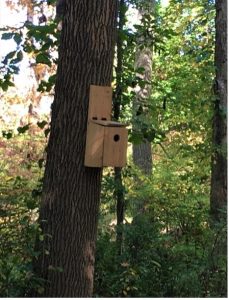
Cavity nesters lay their eggs in tree holes which occur naturally in live and dead trees, or in holes excavated by woodpeckers. Woodpeckers, along with screech and barred owls, wood ducks and kestrels do not actually bring in materials to build nests. They lay their eggs in the wood shavings left when the hole was made or in natural detritus of decaying wood. A thick layer of wood chips must be added to man-made houses to accommodate these birds.
The smaller songbirds build nests, each in their own style. About half of our post-mounted boxes are located in meadows — the primary habitat for bluebirds and tree swallows. Bluebirds, who forage for insects primarily on the ground, weave their nests of grasses. Tree swallows, who catch insects on the wing, use woven grasses and lots of feathers. Chickadees, who usually nest closer to the woods bring in mosses and fur. House wrens pack their box with sticks and use plants fibers, fur and feathers to make a small cup at the top for their eggs.
Volunteers Help Prepare for the Nesting Season
To prepare for the upcoming nesting season, volunteers helped inspect and clean out our small post-mounted boxes. They were asked to photograph any old nests to help us identify what birds nested last year. We found that wrens dominated, followed by field mice, chickadees and even a titmouse.
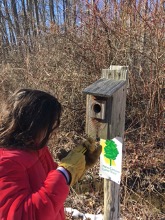
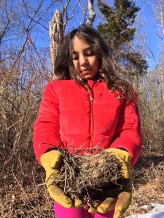
This spring, we did not find any evidence of bluebirds having used our boxes last year, though a pair has been spotted recently at Livingston-Higley meadows. In order to attract them to nest, we may need to add more distance between some of the houses to discourage domination by wrens.
It is interesting to note that house wrens are quite aggressive and will not tolerate others birds nesting near by. They are known to destroy other bird’s nests, eggs and even nestlings. Sometimes they build dummy nests in an adjacent house to discourage other birds from using it. That said, we need to let them be as they are protected as song birds and it is illegal to remove their live nests.
Volunteers are also helping to observe nesting activity between early April and mid-July to determine which houses are being used. If we decide to relocate any of the boxes we will have to wait until later in the summer when nesting season is finished.
Want to check out where our Land Trust properties? Click here.
Recent Comments